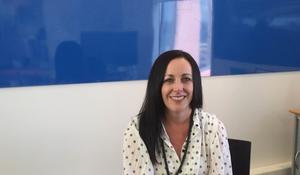CIO100 2017 #8: Carmen Casagranda, Cigna New Zealand

The CIO of insurance company Cigna, Carmen Casagranda, says the future of insurance is undergoing competitive disruption and growth in customer expectations. As such, the company embarked on a company-wide transformation programme.
''With substantial technical debt accrued within Cigna’s legacy systems, operational agility and efficiency has been a difficult and time intensive endeavour. Given the disparate nature of our data, it was imperative to decouple our front and back end architecture by creating a ‘common gateway’ for our data.
''To enable pure innovation, Cigna took the approach of designing solutions as a start-up company, leveraging historical learnings but with a focus on not being hampered by existing legacy systems and processes.
''To achieve this, we began with our ideal customer experience, then looked at existing systems and built a connecting pathway to get from old to new. The outcome was to reinvent the core technology stack, the focus to unify all operations on a single, hypermedia-driven API and database infrastructure.
The insurance industry is one of the oldest in the world, says Casagranda.
''The nature of the relationship between insurance company and customer hasn’t changed in that time, however, the way this is implemented is being re-invented by Cigna.
Taking a strategic ‘omni-everything’ approach means that ''in the coming years our unified platform will allow our customers the ability to custom-tailor interactions with us, while still maintaining the stability and profitability of our overall business.''
She says at Cigna, innovation and projects is about 60 to 70 per cent of effort, maintenance and BAU consuming the residual of activities in ICT. As projects continue to move forward, members of each team are rotated to ensure knowledge is transferred and no individual becomes the only specialist in a given area, she says.
Casagranda says Cigna employs a long-term view on investment. Upfront injections of capital were used to bring in specialised expertise to help develop the initial platform ideas. However, the ongoing design, implementation and long-term feature enhancements are being accomplished in-house.
She says by having a single business technology strategy, ICT is an enabler for the business. Culturally, she has ensured the practices of Agile have been fully engrained within all levels of management.
''Using broad mechanics of the Scaled Agile Framework (SAFe) we have a project board, an architectural oversight committee, a data governance group and regular business owner/leads meetings where required.
Casagranda is proactive in ensuring frequent communication is a key underpinning at Cigna and an important contributor to the success of its Digital Transformation Programme (DTP).
''A number of forums already exist that have been leveraged for regular communication.
''These include a quarterly offsite meeting attended by all of Cigna, where our DTP has a regular feature, and this year we introduced ‘brown bag sessions’, where both our current and future technology trends feature regularly. Mention worthy and a visible success for Cigna has been the fortnightly show and tell sessions, where both the business owner and technical delivery team present together, highlighting the delivered business benefits within each sprint cycle. The latter truly highlighting the cultural changes Casagranda believes mandatory for a business to grow in the current customer experience and customer driven digital environment.
''Our IT leadership team has stand-ups twice a week to discuss wider management initiatives, including regular retrospectives on what works and what doesn’t work. Feedback from the multiple sprint teams’ retrospectives also ensure that the team is continuously learning and asking each other where they could improve.”
For the DTP, when initiated, each epic and feature was evaluated for its customer and internal benefit outcome, ensuring the right strategic focus and prioritisation was given across all the competing streams of work. At the end of each sprint, the DTP steering group meets and progress, benefits and priorities are continuously reviewed, she states.
Regular communications across Cigna International have also elevated the digital and Agile work Cigna NZ are completing.
''At Cigna, we maintain high standards and hire the best of the best from all areas of the world. Across the company, our employees represent a very wide array of backgrounds and experience. Succession planning is a key step in our team development and growth.
''Under my IT leadership ICT has undergone significant structural changes, including the appointment of three new managers within the applications development team.''
Casagranda says part of the leadership development focus this year has been to create an IT leadership team, where the focus is on cross-team collaboration, leadership growth and development.
"A direct second in charge for the CIO role is a focus this year,” she says. “However the current management team work together and support each other in periods of any management team member’s absence.''
Rodney Fletcher